If Sharon Stone’s Art Could Talk, This Is What It Would Say
- Oops!Something went wrong.Please try again later.

Sharon Stone is going back to San Francisco, a place where her life fell apart. She suffered from a massive stroke and lost custody of her child there in the early 2000s.
In a wide-ranging interview, she says her return is an artistic pursuit, and a coming to one with her pain. Her new show, “My Eternal Failure,” opens at Gallery 181 on April 10.
More from WWD
“I’m retracing all the things that happened there and trying to paint about my story,” says Stone, who’s wearing a navy long sleeve T-shirt with silk floral pajama bottoms during a Zoom call from a chilly Los Angeles.
One of the pieces in the show, “The Book of My Eternal Disaster,” is a 6 X 10 foot canvas that has taken Stone two years to paint. It depicts the bright sky with a dark sea that looks as if it’s crying.
Her San Francisco show, she says, is about stepping into vulnerability and shedding the stigmas of perception.
Stone made her European art exhibition debut in February at the Galerie Deschler in Berlin with a show about tribalism.
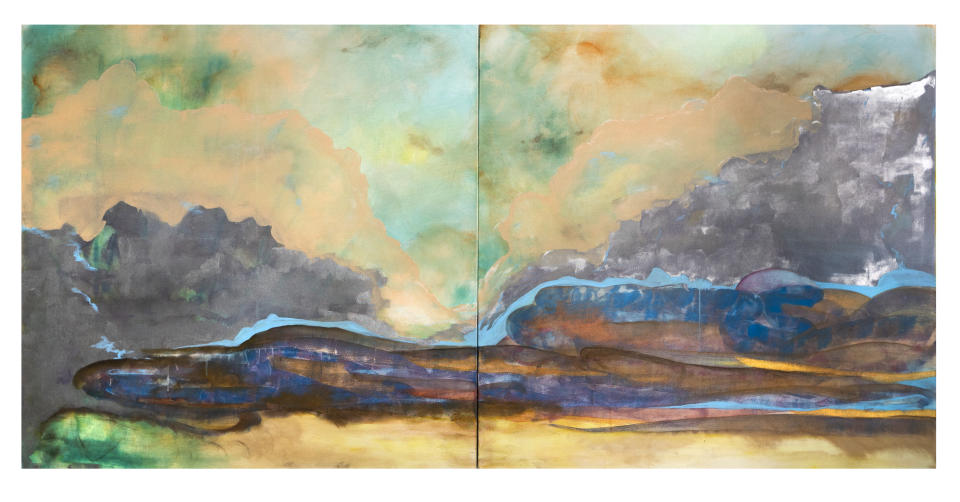
“[Growing up] we were very strongly influenced to dislike Germans and to never trust them — they were always the bad guys in the movies. [I wanted to] invite Germans to be part of my own tribe, to open myself in my complete vulnerability about my life. I really wanted to cure that part of me that thought I should think that way,” she says of why she chose to hold her art show in the country.
Stone adds that she’s doing the opposite of her least-favorite politician, former President Donald Trump.
“He is trying to make us feel xenophobic. He’s trying to reverse-engineer all of our American realities and make us afraid of our own country. I want to be the first person to confront any of my own global fears. I don’t want to be xenophobic. I don’t want to be anything at all like Trump,” she adds.
It was that moment in Berlin that led her to face her past reality in San Francisco.
She admits it’s hard to go to the places where one has been hurt, but she’s doing it nonetheless.
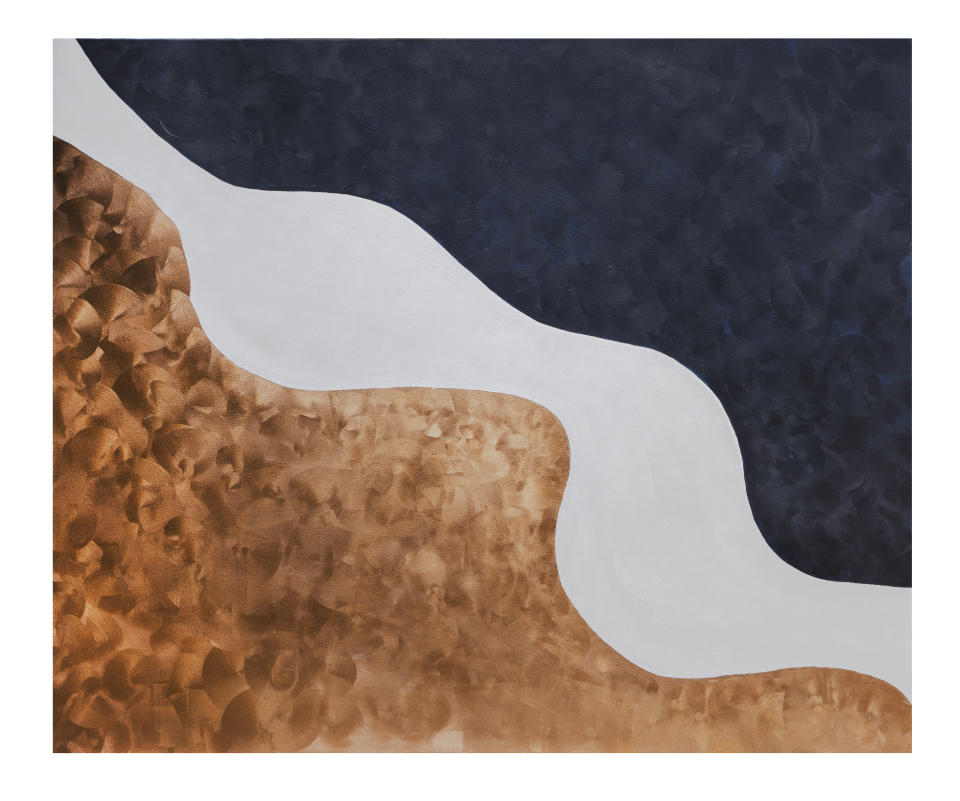
“It’s foolhardy to carry around pain when there’s nobody inflicting it. It’s just a waste of time, we see this in countries all over the world where people are fighting for things that happened hundreds and thousands of years ago,” says Stone, explaining that she wants to live in the present and open her “meager” offering of art in order to forgive herself and perhaps help others do the same.
Although Stone grew up in the small town of Meadville, Pa., where they had no traffic lights and the kids drove their tractors to school, art was her savior. There were always art classes for children and ceramics classes for the parents at night despite the tiny educational budget.
Her mother, Dorothy Marie, graduated from high school the same year as Stone because she had come from abject poverty, and couldn’t finish school as a teenager. The pair would take ceramics classes together that Stone calls “incredibly rewarding.”
Her father, Joseph William Stone II, received his education at their kitchen table, from his wife.
Both her parents were child slaves, she says. Her mother was given away at the age of nine to work as a housekeeper, cook and laundress. Her father was given away at the age of four to live in a stranger’s barn to do chores.
Stone’s mother would later go to bookkeeping school and become the bookkeeper for her husband’s tool and die manufacturing business.
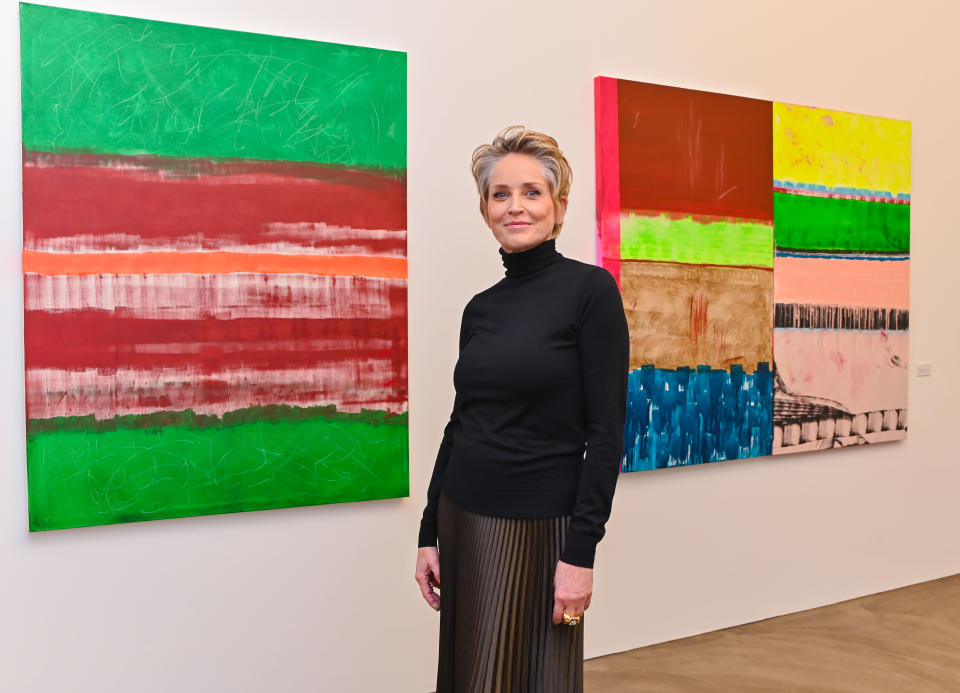
“My dad started his business by saving nickels, dimes and quarters in mason jars, and putting them in the pantry of our house. We understood the value of that in our family and that’s why, as a small-town girl who has gotten to experience the great big world, I can say that our country deserves to be educated,” she says.
“We have under-educated our American people on purpose and that’s very painful to understand and to know,” she adds.
Stone argues the arts are America’s second-largest taxable export and that makes her angry.
“All these senators — I don’t even think they deserve their titles anymore — are shutting down the arts. We know the arts stopped recidivism in prisons, but now that prisons have become privately owned and are such a big business for people, they don’t want to stop recidivism because [the business is] too lucrative,” she says.
“Criminality is a bigger business, privately, than the arts is for the whole country. We’re holding up these few rich individuals over the value of the country as a whole and that to me is not good business,” she adds.
Stone praises her small-town education as it also gave her the ability to raise millions, if not billions, of dollars for the entertainment industry and for medical research and vaccines.
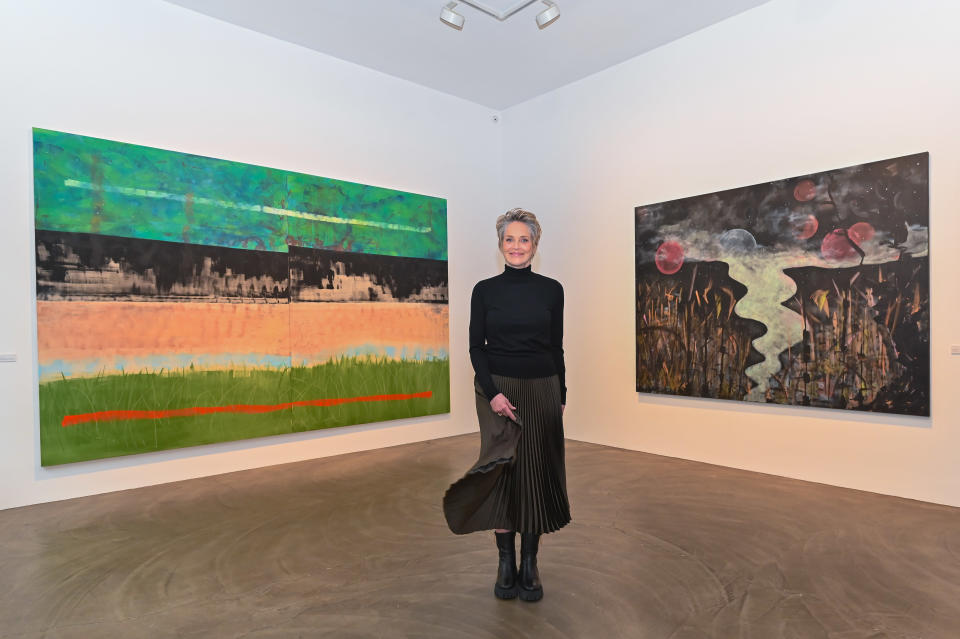
She’s raised money through private equity for HIV/AIDS care that won her the Peace Summit Award in 2013 and has written a book, “The Beauty of Living,” that’s sold in 22 countries.
“I’m able to speak on humanitarian issues globally because that is what art in a small town does. This is the value of receiving an art education in a small town — it’s valuable and it matters,” says Stone.
In 2016, she went back to college at Pennsylvania Western University in Edinboro, Pa., to complete a degree in art and art history in her late 50s. At the age of 15, she received a creative writing scholarship from the university, but dropped out to become a model in New York City.
“You can’t take away someone’s college degree and you can’t take away the pride and the impact of what that means,” she says, reminiscing about her education.
The reason Stone took up art again was to express herself without waiting for the approval of others.
“I don’t need to wait until someone says, ‘here’s a job.’ I can just get up, go to my studio and work every day, all the time. I have a very blue collar work ethic, I need to work,” she says.
Sometimes she goes into the studio and makes a piece a day, while at other times, a piece can take up months, if not years.
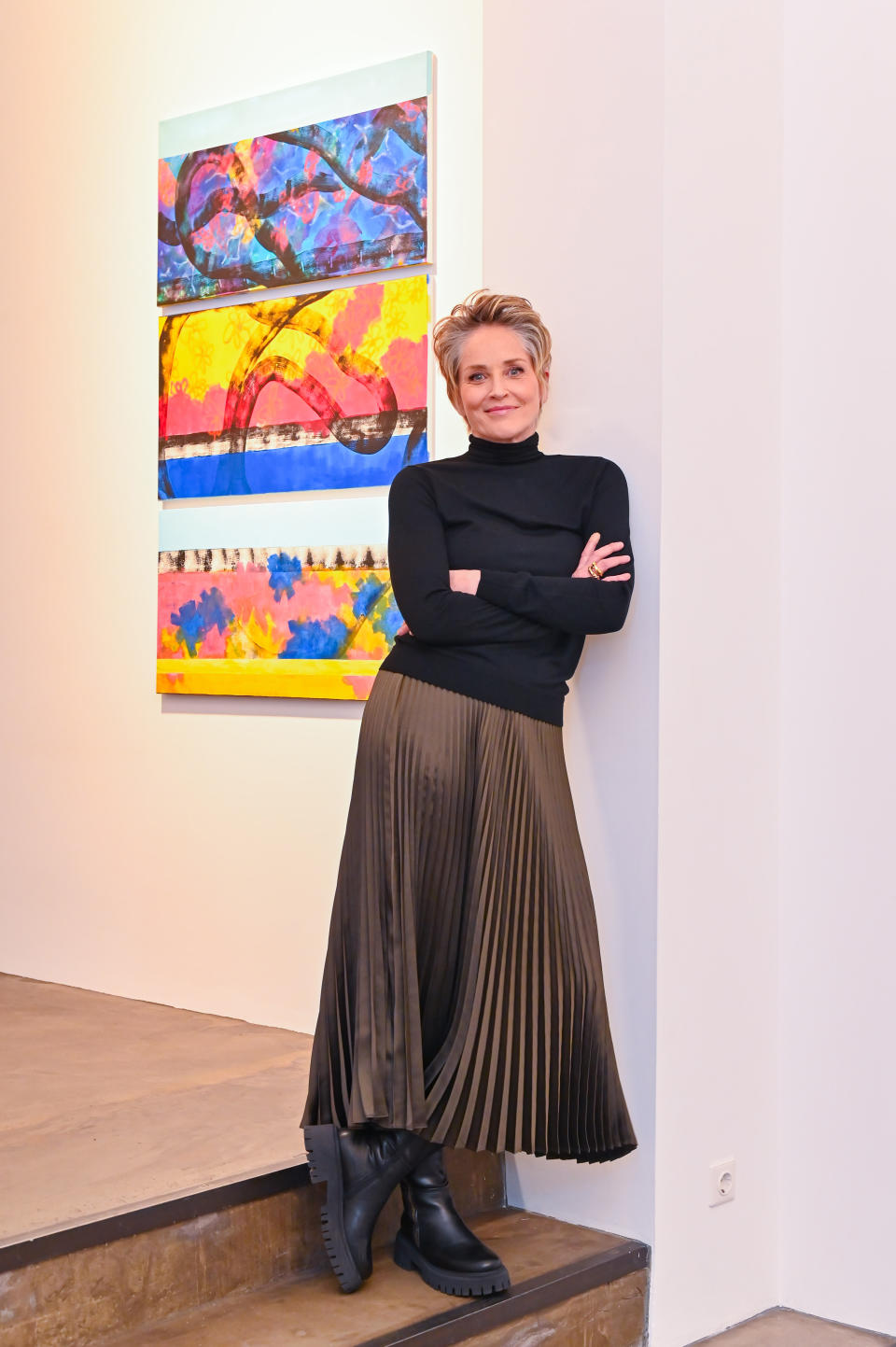
Stone’s art is informed by the modernist movement and her “Totem” show drew from the works of American legend Mark Rothko. She’s very much a colorist in her practice and she says her brain hemorrhage in 2001 has expanded the number of colors that she can see.
The piece “Africa/Apartheid,” for example, takes abstract brush strokes in shades of green, oxblood and orange to illustrate South African apartheid when Stone lived there.
A majority of her art comes from lived experiences like that. In “Portrait of My Boyfriends From Foreign Countries,” there are around 15 blocks of colors, some larger than others. The piece is a construct of all the people she has met who have left a mark on her.
“I think about love, hate, loss, heartache, my childhood, all the ways people behave, the projections people put on me and the way people rush to war and don’t have any idea what they’re doing,” says Stone about her approach to putting paint on a canvas.
“I go into the studio and I look at the canvas and the canvas tells me what it wants. At other times, I go into the studio and I’m completely stupefied — I’m sort of waiting to hear from the universe,” she adds.
She finds the process of painting to be a spiritual one and feels connected “to whatever it is [that unites] us,” she says.
Stone had a psychiatrist look at her work, and they told her there is so much “change, fluidity and water” that her pieces represent a lot of joy.
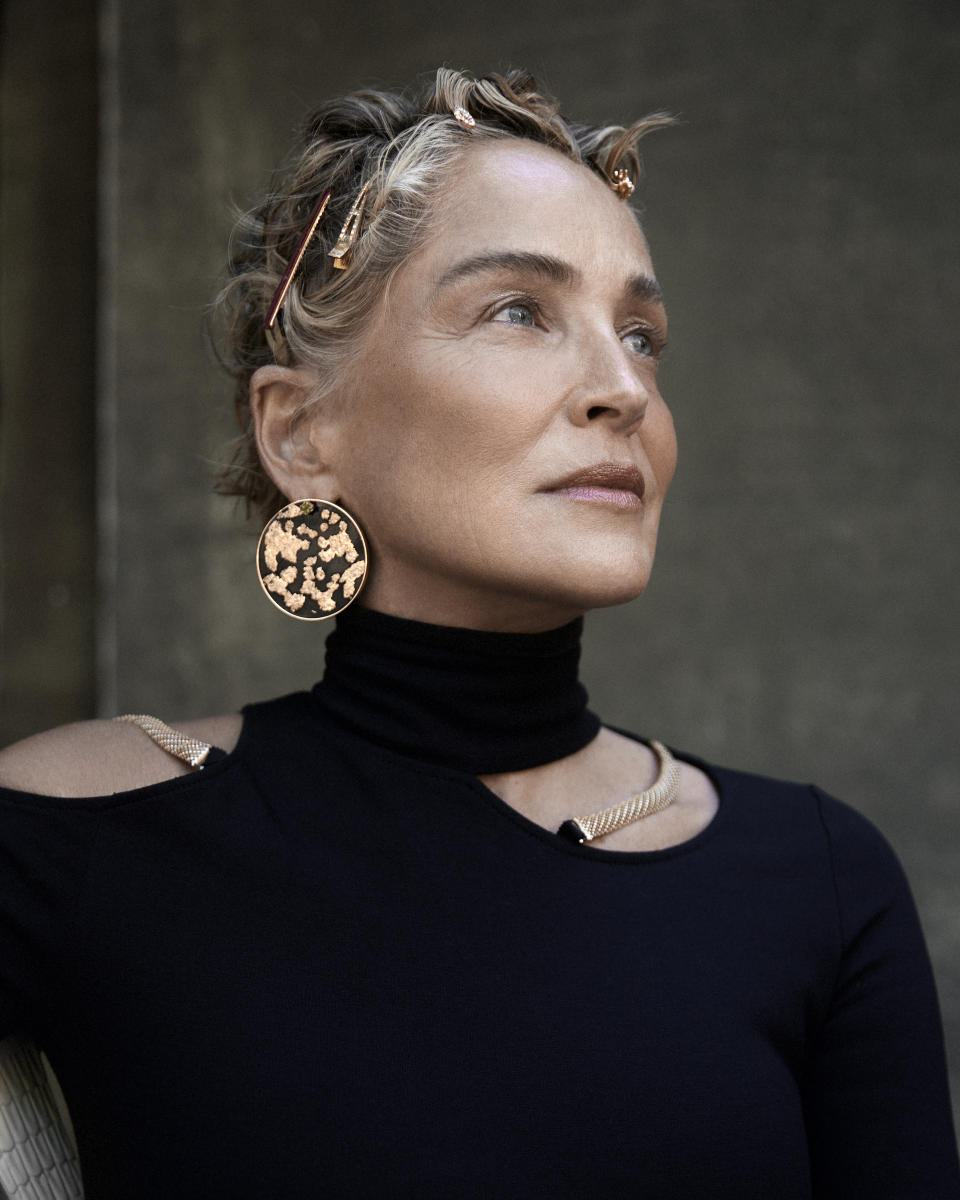
Art has become a full-time occupation. She has sold pieces and her work has been critically acclaimed by reviewers. She’s also a collector.
After the release of “Basic Instinct,” the erotic thriller that made her famous, Stone made an agreement with herself to spend 10 percent of her earnings on art.
“Art has kept me very safe because I had a bank steal a lot of my money, as well as corrupt business managers and a bad marriage — all kinds of things that leave you financially insecure. Art is a beautiful security and a great way to protect yourself financially,” she says.
Beyond being an actress and artist, Stone is also politically tuned-in, charming and deeply spiritual. She meditates and knows that, in astrology, her rising sign is Scorpio and her moon is in Virgo. She was born a Pisces and her birthday is March 10 (which this year happens to be Oscars Sunday).
As the conversation turns to her monthly astrology reading, Stone notes that Saturn is returning to give her a “refresher course,” which occurs every 29.5 years.
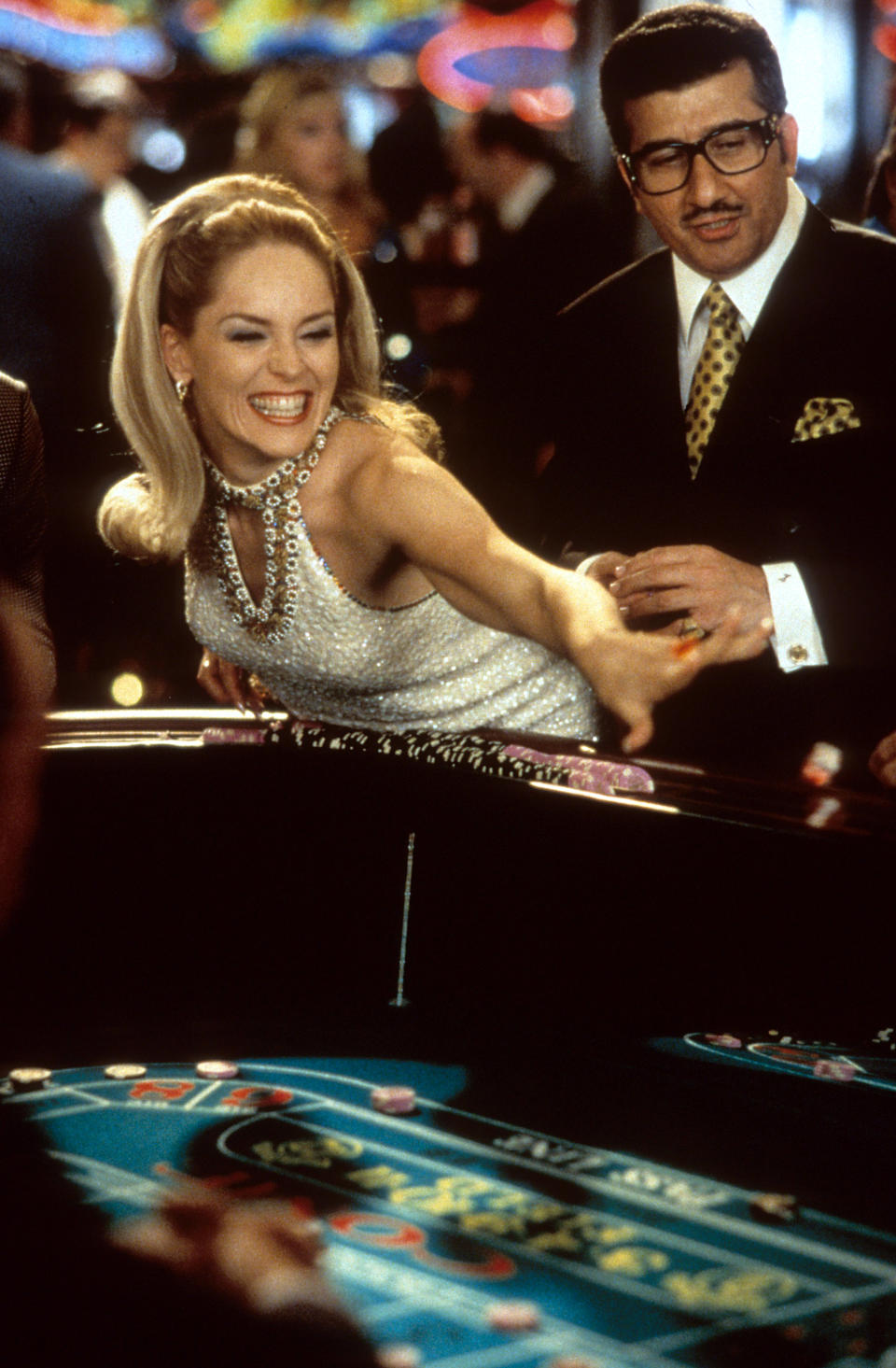
“So this is apparently going to be like it was in the ‘90s for me, but now I’m mature. That’s kind of a big thing to have the same energy as in the mid-’90s. It was pretty much my decade, I was the lady of the ‘90s. It was me and Princess Diana,” says Stone, recalling the thousands of people following and chasing her with cars and helicopters, almost like a scene out of “Basic Instinct.”
“It was like being The Beatles, but you don’t know what it was like for them either. It was a decade of a frenzy. There isn’t fame like this now,” she says.
She calls the fame of the ‘90s “immediate” and something that everybody had to be present for because there were no cell phones or social media.
“There were movie stars then — a whole different sort of movie star — there aren’t movie stars now. Studio executives don’t know how to do that and they don’t understand it. They also didn’t respect it when they had it,” Stone says.
“Studios don’t understand the value of a $40 million to $50 million erotic thriller and that people would go to the theater to see an erotic thriller because you can take your date and make out in the dark. You don’t get that at home and it’s exciting when you can meet someone you barely know in the theater and the movie is so erotic that you want to feel each other up a little bit,” she says.
Stone admits there’s a banality to the studio system now and that people still have erotic fantasies.
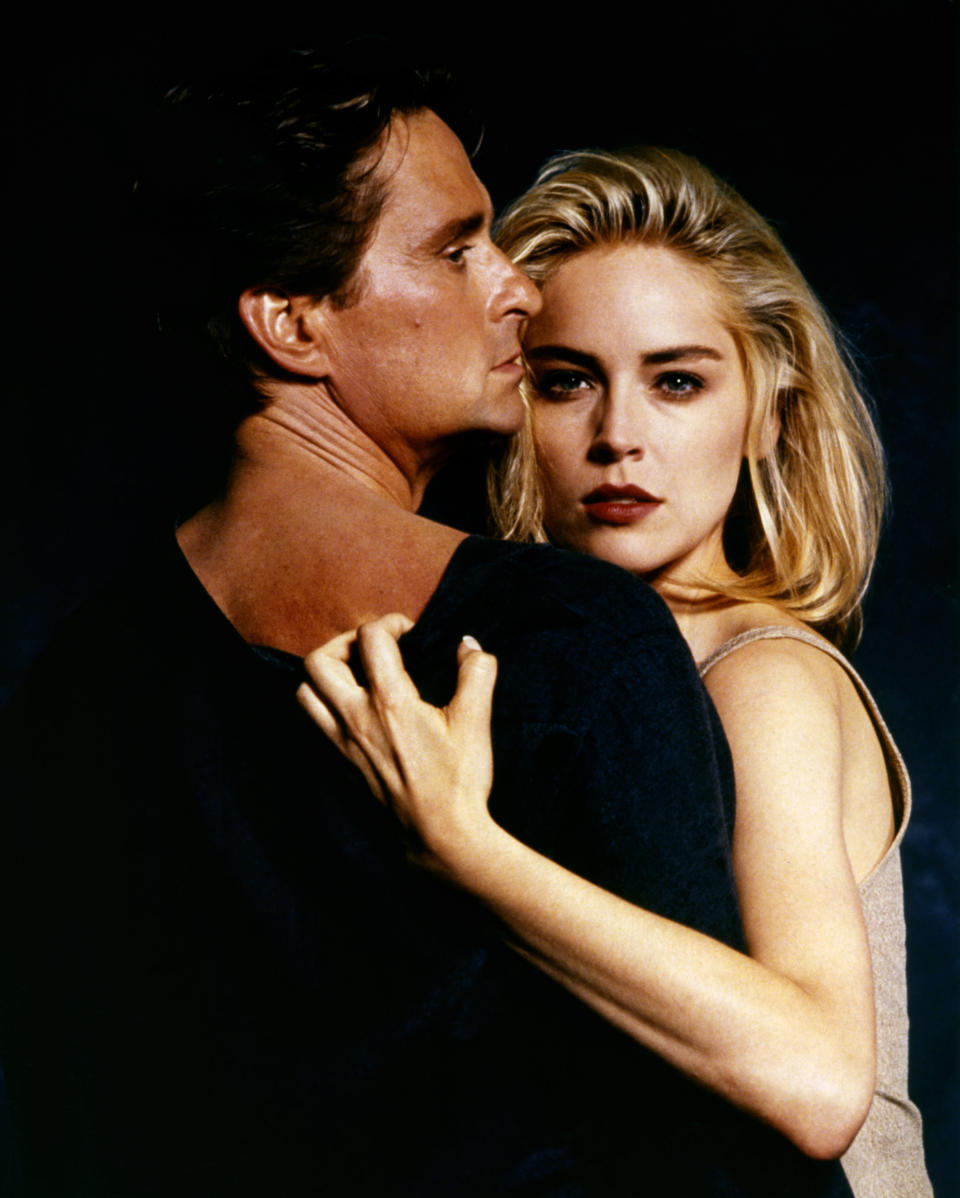
She says she’s met a lot of people that got together, married and had kids over “Basic Instinct.”
Despite not actively looking for acting jobs, Stone still gets approached for roles, but they’re often disappointing as she gets offered two scenes with a nominal fee.
“They want to use my power over the press to promote their films. Without the journalists and photographers, there is no public. These kids that want to walk around and hide from the press, dress s–t, and be obnoxious to the press, it’s like, ‘don’t you want to be in the movie business?’” she asks.
“I know that the press is responsible for me living in this nice house. I know that and I’ve always known that, but giving me one scene in a movie, that’s disrespectful. I’ve proven myself as an artist,” she adds.
Stone is still hopeful that when the right offer for a film comes in — she hints that one has come in — then she will be all for selling the movie because “I sold even the ones that weren’t our favorites because it’s called show business,” she says.
Until her return to the big screen, she’s grateful to be accepted into the art world.
“I’m learning and growing as I’m having these art shows,” says Stone.
Best of WWD

